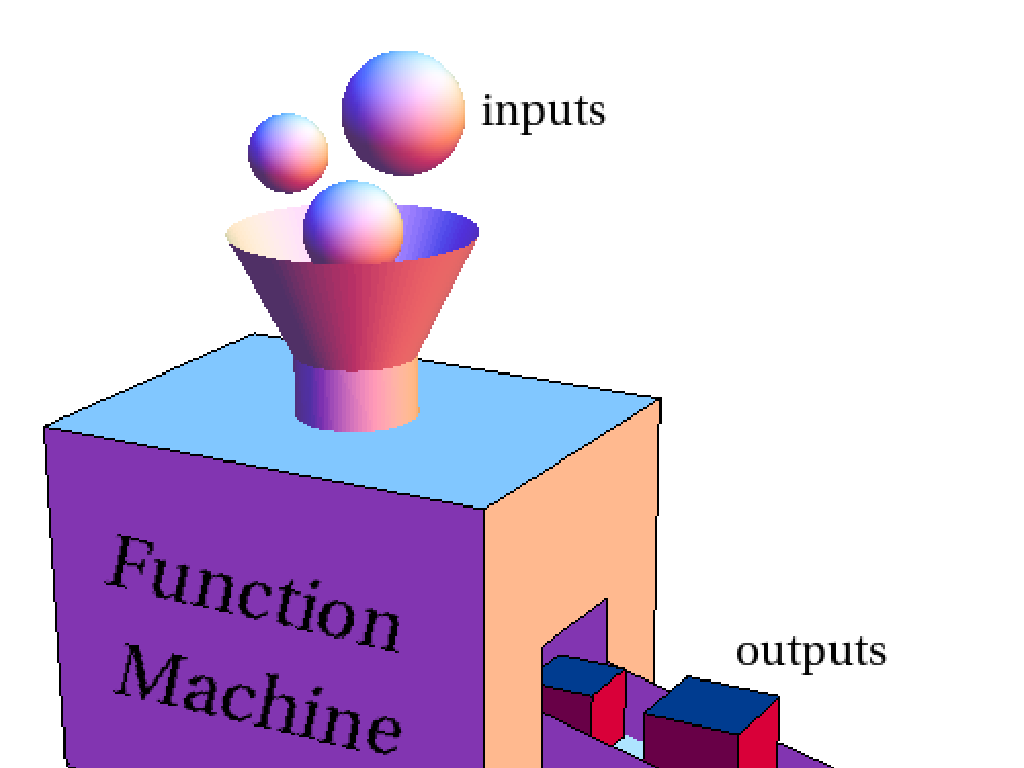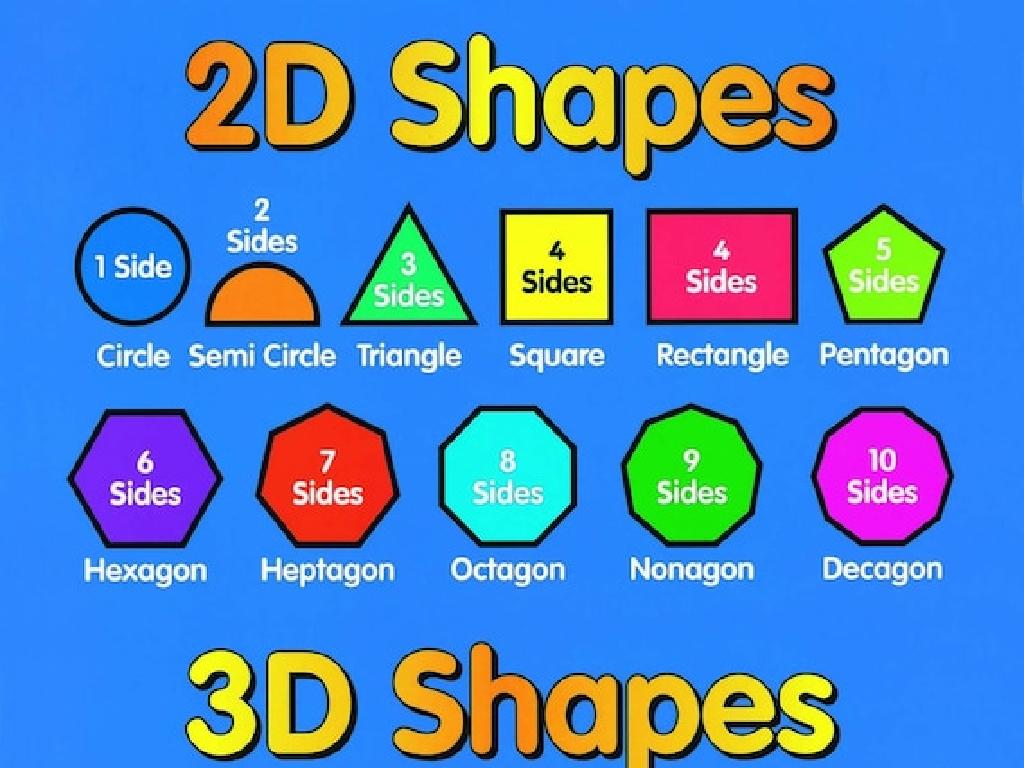Add In Any Order
Subject: Math
Grade: Kindergarten
Topic: Addition Up To 10
Summary: In this engaging Kindergarten math lesson, students explore the concept of adding numbers in any order up to 10 using fun, hands-on activities. The lesson introduces the commutative property of addition through relatable examples like apples, counting blocks, and group games. Children learn that 2 + 3 and 3 + 2 give the same total, making math both magical and flexible. With practice and play, young learners build foundational skills and confidence in early arithmetic.
Please LOG IN to download the presentation. Access is available to registered users only.
View More Content
Welcome to Addition!
– Hello, Kindergarten Superstars!
– Today’s goal: Become addition experts
– Discover ‘Add in any order’ secret
– Numbers can be added together in any order and the sum will be the same.
– Adding is like building with blocks
– Just like stacking blocks, whether we start from the top or bottom, we can build the same tower.
|
This slide is designed to introduce Kindergarten students to the commutative property of addition in a fun and relatable way. Emphasize the concept that in addition, the order of numbers doesn’t affect the total. Use hands-on activities like building with blocks to demonstrate this concept. For example, show that 2 blocks plus 3 blocks is the same as 3 blocks plus 2 blocks. Encourage the children to try adding numbers in different orders with real objects or illustrations to solidify their understanding. The goal is to make them comfortable with the idea of addition and to understand that it can be done in any order, which is a foundational math skill.
Learning to Add: Combining Numbers
– What is addition?
– Addition is putting 2 or more numbers together to find a total.
– Adding means combining groups
– Like combining 2 sets of toys to see how many you have altogether.
– Let’s add using our fingers!
– We can use our fingers to add numbers up to 10.
– Addition is fun and easy
|
This slide introduces the concept of addition to Kindergarten students. Start by explaining that addition is simply combining two or more numbers to find out the total amount. Use tangible examples like combining sets of toys or snacks to make the concept relatable. Demonstrate adding with fingers, as it’s a practical and visual way for young learners to understand the concept of combining groups. Encourage the students to practice with their own fingers and to understand that no matter the order, the total remains the same. Make the learning process interactive and enjoyable to foster a positive attitude towards math.
Addition Fun: Numbers Can Dance!
– Add numbers in any order
– 2 + 3 and 3 + 2 both equal 5
– It doesn’t matter which number comes first; the sum remains the same.
– Let’s try more examples
– We can practice with different numbers to see this magic.
– Addition is like a number dance!
|
This slide introduces the commutative property of addition in a way that’s accessible for kindergarten students. Emphasize that in addition, the order of numbers doesn’t affect the result. Use simple examples like 2 + 3 and 3 + 2 to illustrate this point. Encourage the students to think of addition as a fun dance where numbers can switch places and still get the same sum. During the class, engage the students with hands-on activities where they can physically move number cards around to see the concept in action. This will help solidify their understanding that addition is flexible and fun.
Example Time: Adding Apples in Any Order!
– Start with 1 apple + 4 apples
– How many apples in total?
– Now try 4 apples + 1 apple
– Is it the same as before?
– Same total for both?
– Adding in any order is fun!
– It works for any numbers up to 10!
|
This slide is designed to demonstrate to Kindergarten students that addition can be done in any order and the total will still be the same. Start with a simple example using apples, as it’s a relatable item for the children. First, show them 1 apple plus 4 apples, and then reverse the order to 4 apples plus 1 apple. Ask the students if they notice that the total number of apples remains the same in both cases. This concept is known as the commutative property of addition. Reinforce that this is a fun and easy part of learning math, and encourage them to try adding other numbers up to 10 in any order. The goal is to make them comfortable with the idea that the order of numbers doesn’t affect the sum.
Practice Makes Perfect: Adding in Any Order
– Try adding numbers on your own
– Order doesn’t change the sum
– 2+3 is the same as 3+2, both make 5
– Pair up for fun with counting blocks
– Use blocks to see how 5+1 and 1+5 both equal 6
– Show your answers to the class
|
This slide is designed to reinforce the concept of commutative property in addition for kindergarten students. Encourage the children to independently try adding numbers up to 10, emphasizing that the order of numbers doesn’t affect the sum. Pairing up students allows them to collaborate and learn from each other while using counting blocks as a tactile learning tool. After the activity, invite students to present their findings to the class, which helps in building their confidence and communication skills. Provide guidance and ensure each pair has a set of counting blocks. Offer praise for effort and correct answers to foster a positive learning environment.
Class Activity: Addition Circle Game
– Sit in a circle with friends
– Pass around counting objects
– Add objects in any order
– Use your fingers or drawings to add
– Share your total when music stops
|
This interactive activity is designed to teach Kindergarten students that numbers can be added in any order and the total will still be the same. Provide a variety of counting objects like blocks or beads. As the music plays, students will pass the objects around, adding more to their collection each time. When the music stops, they’ll count their objects. Encourage them to use their fingers or draw pictures to help them add. This activity not only makes learning addition fun but also helps develop their fine motor skills and understanding of the concept of addition. Possible variations include using different types of objects, changing the music tempo, or having students pass objects in different patterns to add variety to the game.
Addition Mastery: Order Doesn’t Matter!
– Congratulations on learning addition!
– Addition order doesn’t affect the total
– For example, 2 + 3 is the same as 3 + 2
– Practice makes perfect
– Soon you’ll add even bigger numbers!
|
This slide is meant to celebrate the students’ understanding of addition and to reinforce the commutative property of addition, which states that the order in which numbers are added does not change the sum. Encourage the students to continue practicing with different numbers within the range of 0 to 10. Highlight the importance of practice in becoming comfortable with addition, which will be the foundation for learning more complex math concepts. As they become more confident with smaller numbers, they will gradually be introduced to larger numbers. Use positive reinforcement to build their confidence.





